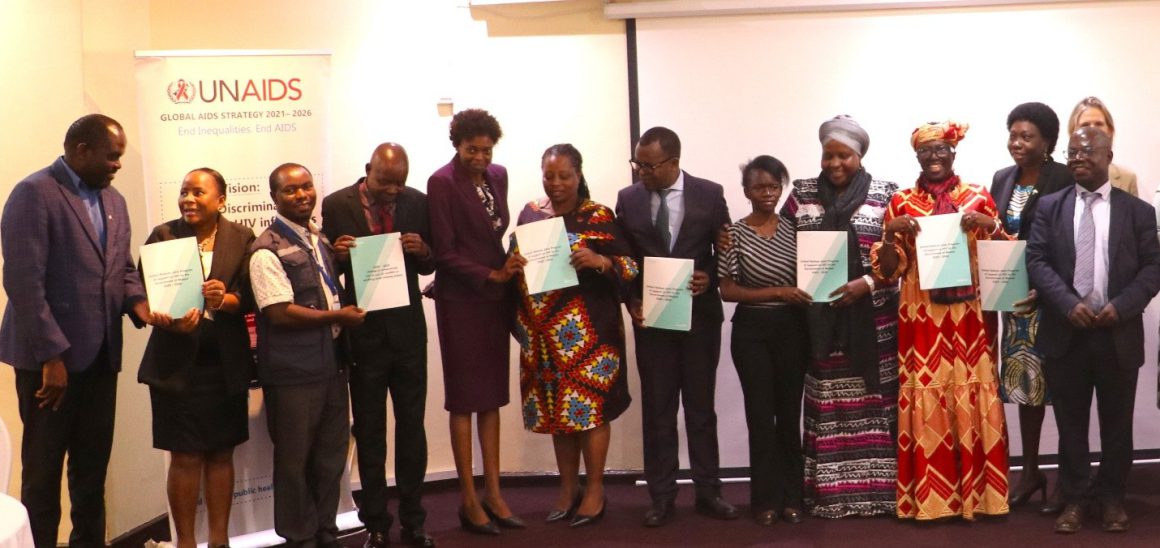The UNAIDS Joint Programme Plan for Malawi for 2025-2030 has been unveiled. The program focuses on ending AIDS as a public health threat by 2030. This program builds upon the National Strategic Plan for HIV and AIDS (2023-2025) and aims to accelerate progress towards the 95-95-95 targets, ensuring that most people living with HIV know their status, receive treatment, and are virally suppressed. The programme has been unveiled amidst fragile macroeconomic environment, worsened by the sudden reduction of funding from the United States of American Government, the largest funder of HIV in the country. Speaking at the unveiling ceremony held in Lilongwe on Monday, Malawi National Aids Commission Chief Executive officer Dr. Beatrice Matanje said over the years, through strong political will, community leadership, and the unwavering support of partners, Malawi has achieved remarkable strides in the fight against HIV since the first case was reported in 1985. Dr. Matanje proudly mentioned that Malawi successfully achieved the global 95-95-95 targets by 2024, ahead of the 2025 deadline. Also, she said HIV prevalence among adults (15+ years) has declined significantly from over 14 percent in the late 1990s to 7 percent in 2024. In addition, she explained that the annual AIDS-related deaths have declined sharply from a peak of 80,000 in 2003 to 14,000 in 2024. One remarkable achievement is that around 92 percent of all HIV positive adults (thus, 15 years and older) are on the Anti-Retroviral Treatment (ART) and retained in care. However, Dr Matanje expressed concern over that fact that only 58 percent of children 0-14years who are HIV positive , are on antiretroviral therapy (ART). She therefore called upon all implementers and partners to pay attention and invest more in HIV programming among children.
“The progress we have made so far, has been largely financed through a combination of international and domestic resources, with significant support from the Global Fund to Fight AIDS, Tuberculosis and Malaria, the U.S. President’s Emergency Plan for AIDS Relief (PEPFAR), and the UNAIDS Joint Program, that is “launching” it’s 2025 – 2030 plan today”, explains Dr. Matanje. However, it was observed that these gains are threatened by the fragile macroeconomic environment, worsened by the sudden reduction of funding from the United States of American Government, the largest funder of HIV Programs in Malawi.
“ Allow me to say that the future of a sustainable country owned and integrated HIV response amidst the dwindling external support, lies in the full implementation of the national strategic documents such as the Health Financing Strategy that is aimed at increasing domestic financing, and the Sustainability Roadmap ”, said Dr Matanje

Minister of Health Khumbize Kandodo Chiponda who officially unveiled the UNAIDS Joint Programme for Malawi for 2025-2030 has described the program as timely and a call to renew commitment towards national response to HIV and AIDS. “This is very strategic as it will support the Government of Malawi to safeguard the HIV prevention and treatment gains, and advocate for increased programmatic and financial leadership”, said Chiponda. UN resident coordinator Ms. Rebecca Adda Donto said the Joint Program seeks to catalyze and crowd in technical support to crucial HIV treatment and prevention interventions in Malawi. She added it will seek to harness UN agencies’ collective expertise, resources, and partnerships to provide sharper and tailored normative guidance to enable people at highest risk of HIV infection to benefit from the latest scientific, medical, and technological innovations in HIV prevention, treatment, and care, regardless of geography or economic status. Furthermore, the newly unveiled program will support the Government to integrate HIV in country systems including health, legal, social protection, data, procurement and supply chain) and improve its resilience and adaptability in responding to HIV in different settings – including in workplaces, humanitarian, climate-affected, displacement and conflict contexts.

